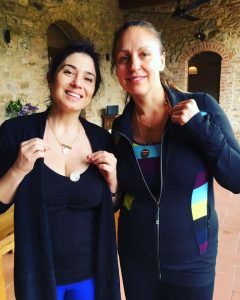By Diana Odasso
Within a week of turning sixteen in 1983, my cousin Raine flipped her first car, a brand-new cherry-red Saab, onto the beach in South Florida, amidst the hysterical laughter and shouts of her friends: a slow-motion disaster that luckily ended without injury. It was the kind of thing that only sixteen-year-olds could find funny and only because tragedy had avoided them thus far.
Once the sirens sounded in the distance, the teenagers dispersed in all directions. Raine was nowhere to be found when the police knocked at Uncle John’s door.
During college, there was that Outward Bound trip she was supposed to be leading. Raine broke her leg after an unsuccessful trapeze act above a waterfall. While she waited besides the freezing waters, her body plunging into shock, a group of terrified tenth-graders trekked alone through the woods to radio for help.
There was also the time that Raine found herself stranded in open water on a dive trip in the Galapagos. Her ex-husband was an acclaimed underwater photographer and she was still driven by the viscid desire to outdo him.
Without the precaution of a dive buddy, she swam off to film a meandering Galapagos shark. After some time, she arrived center stage in a glorious spiraling of jacks. Suddenly, the school of fish became agitated by the appearance of other sharks. With the agitation came frenzy, came swarm, came the feed. Finally aware of the danger she was in, Raine began a controlled ascent. Her camera dangled from a ripcord on her belt. The video was still recording as she surfaced and discovered her predicament: the blank plate of the sea, no boat, no land, sharks still orbiting below. She had been caught in a current and pulled off course by miles.
A rookie mistake.
The footage was later picked up by a major network and turned into a show about extreme survival.
What the viewer saw in the footage were the sharks rising in narrowing concentric circles towards Raine’s neoprene legs.
What the viewer also saw was the shake of the camera as the sharks began to bump her one-by-one, testing to determine whether or not she was a worthy food source.
What the viewer heard were her screams.
The show was aptly titled, “Primal Fear.”
What happened next to Raine was less acute but equally dangerous. Raine was not bitten by any Galapagos sharks; they refocused their attention back on the jacks. But humans lost in the wild perish more frequently of overexposure rather than trauma.
She began to swim. Some air remained in her tank and she filled her BCD to maintain buoyancy. But she was overheating in her wetsuit and grew aware of the potential for dehydration. In the distance, a faint shoreline became visible. She continued onwards, arriving finally not at a shore, but at the rocky outcropping of Darwin’s Island. Exhausted, she tried to climb out of the churning waters, but ended up dashed against the volcanic, pitted rocks. A few ribs cracked. Somehow, several attempts later, she hoisted herself up and wrapped her arms around a jagged boulder away from the heaviest surf.
Energy escaped her. Breath was drawn hard around her broken ribs. Thoughts of death coalesced and took root. But by some miracle, a rescue helicopter finally spotted her clinging to the rocks of Darwin’s Island. A search and rescue had been underway. She had been missing for five hours.
After the show’s release in 2004, Raine followed the interview circuit in New York and Los Angeles in what would be short-lived, circumstantial fame. I sat next to her in the hair salon as she had extensions glued into her thinning bleached hair, Raine talking a mile a minute about the massive opportunities pouring her way. I walked with her to private boxing lessons, which she went to every day for two weeks until her interview with Larry King. She had to lose weight. She had to look her best.
Over the course of this flirtation with fame, Raine retold the story, re-chewed it, rehashed, and reimagined herself as an oceanographer, a conservationist, and an ambassadress of the oceans. At first it was one Galapagos shark. Then seven. Then twenty. At first it was seven-foot waves, then fifteen-foot seas, then seventeen.
I had seen sharks in the video. That’s all I knew.
After this spectacular frenzy, the depression returned convincing her to travel so far off the map, we couldn’t track her anymore. We could neither watch for the sadness, a hesitant dam against her skin, nor for the surge.
By the end of the decade, she had moved permanently to the Galapagos.
I wonder what it all amounted to—the repeated survivals ushering her to the razor’s edge and yanking her back just as rapidly, like the nauseating pull of high tide. I wonder what made her want to move down to those Godforsaken islands—between heaven and hell as the Galapagos are sometimes described. I wonder what bleakness, what solitude, what sublime beauty could fill a heart craving the adrenaline of the fall.
Was she proving herself immortal or simply proving her willingness to die young, a culmination of her long efforts to outrun life?
It would come down to something that simple.
***
In the late 2000s, I was working on a documentary project in a villa misería outside of Buenos Aires. We were interviewing a young prostitute, who had lost her father to AIDS and her mother to cancer. She was raising a two-year old in a shanty along the primary artery of a precarious slum, Villa 20 or Villa Lugano, not far from the airport that welcomed daily throngs of tourists.
Cross-legged on a thin mattress, Magali leaned in and confided, “Van a ver, chicas. You’ll see. One day, life will teach you everything you need to know.”


